For the last five years, a mural of the late community activist Gloria Casarez has stood as a beacon of hope and representation on South 12th Street in Philadelphia's Gayborhood, an area located in the heart of the city.
Casarez, who was Philadelphia's first director of LGBTQ affairs, died of cancer in 2014. She was 42.
"A lot of us gathered (by the mural) to be close to Gloria after she left. It was a place where you could feel like you were being looked at by Gloria and feel safe and be in this space," Erme Maula, who has lived in the community for the last 30 years and knew Casarez, told TODAY.
On Wednesday, Dec. 23, the mural — which is on the side of a building that was purchased by Midwood Development and Investment in 2018 — was abruptly painted over with a fresh coat of white paint. The New York City based developer posted its intention a few months ago to demolish the building and had been engaging in talks with concerned community members about another way to honor Casarez at the location.
However, the sudden literal whitewashing of the mural came without warning and prompted questions about why it was even necessary. "Not for one moment did they ever say part of the demolition process was whitewashing the mural," artist Michelle Angela Ortiz told TODAY. "They never said that. For me to wake up Wednesday and find out they were painting the wall white, it was a shock."
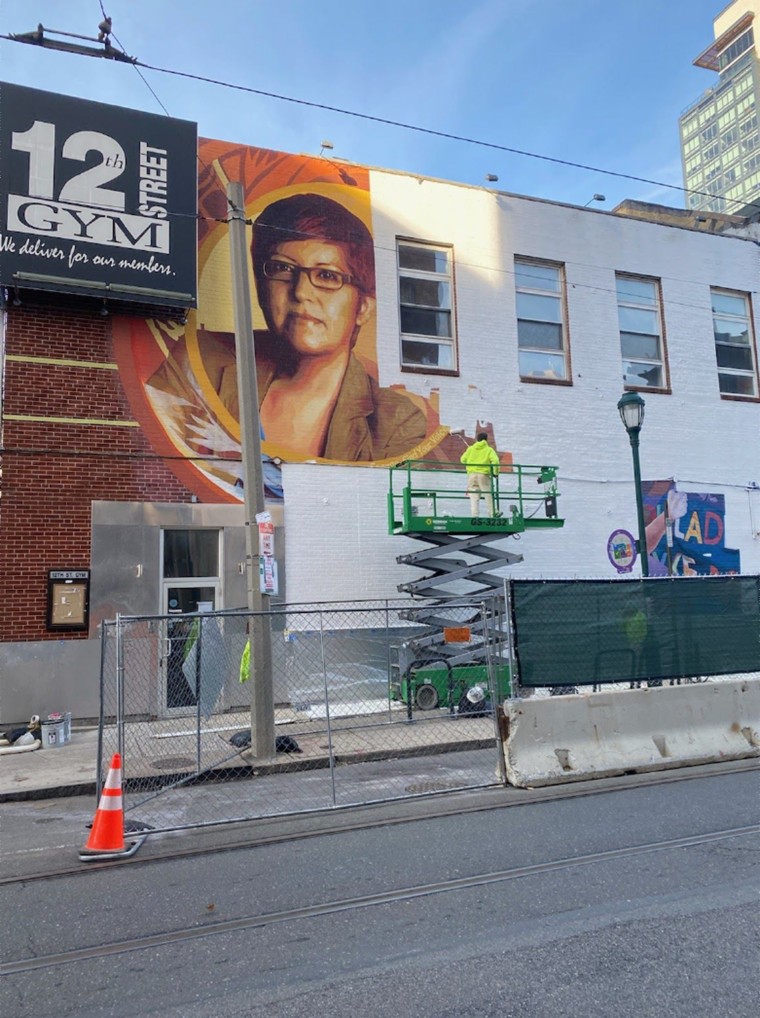
"We mourn the loss of Gloria all over again"
Casarez was a force for equality in the Philadelphia community and at the national level. While a student at West Chester University, she was a founding member of Empty the Shelters, a national housing rights and economic justice organization. She later served as executive director of the Gay and Lesbian Latino AIDS Education Initiative (GALAEI) in Philadelphia at the age of 27. In 1999, Casarez was celebrated as one of the "100 Most Influential Leaders of the New Millennium" by Out magazine.
In 2008, Casarez was appointed as Philadelphia's first director of LGBTQ affairs. According to Philadelphia magazine, during her tenure she worked "to put into place the groundbreaking LGBT Equality Bill that helped Philadelphia earn a perfect score on the Human Rights Campaign Municipal Equality Index." She also developed "priorities and policy for the administration in a wide range of areas, including health, city services, civil rights, public safety and education."
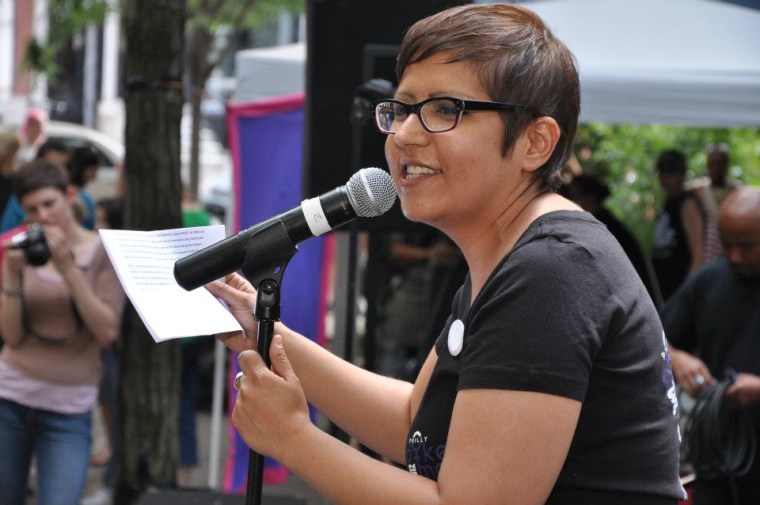
After Casarez's death in 2014, Ortiz and Briana Dawkins spent a month and a half painting the mural a year later. They also enlisted help from her family and friends to paint parts of the mural, bringing even more meaning to the project. While Ortiz said she had been in talks with Midwood about using a $1 million public art bonus to cover the cost of creating a new tribute to Casarez in the area, she hoped to also salvage her work, even after a demolition she expected to be notified about in advance.
The mural was painted on parachute cloth, which the artist described as a "polyester fiber that adheres to the brick wall." With the plans to demolish the building, Ortiz said she still believed it would have been possible to collect large pieces of the mural to reassemble and save. She doesn't understand why the building is still standing, but Casarez was painted over.

“There’s so much symbolism. Gloria represented a group of people who are marginalized, not seen or heard and have felt the effects of erasure, so for her to be painted over by white paint is re-traumatizing so many in the community," she said.
Mural Arts, a group that had been in discussions with the developer about creating a new way to honor Casarez and expanding the plan to include Henry Minton — a prominent Black abolitionist who died in 1883 — tweeted it was "shocked" and "we mourn the loss of Gloria all over again." (Minton's home and place of business is next door to the mural and will also will be demolished by the developer.)
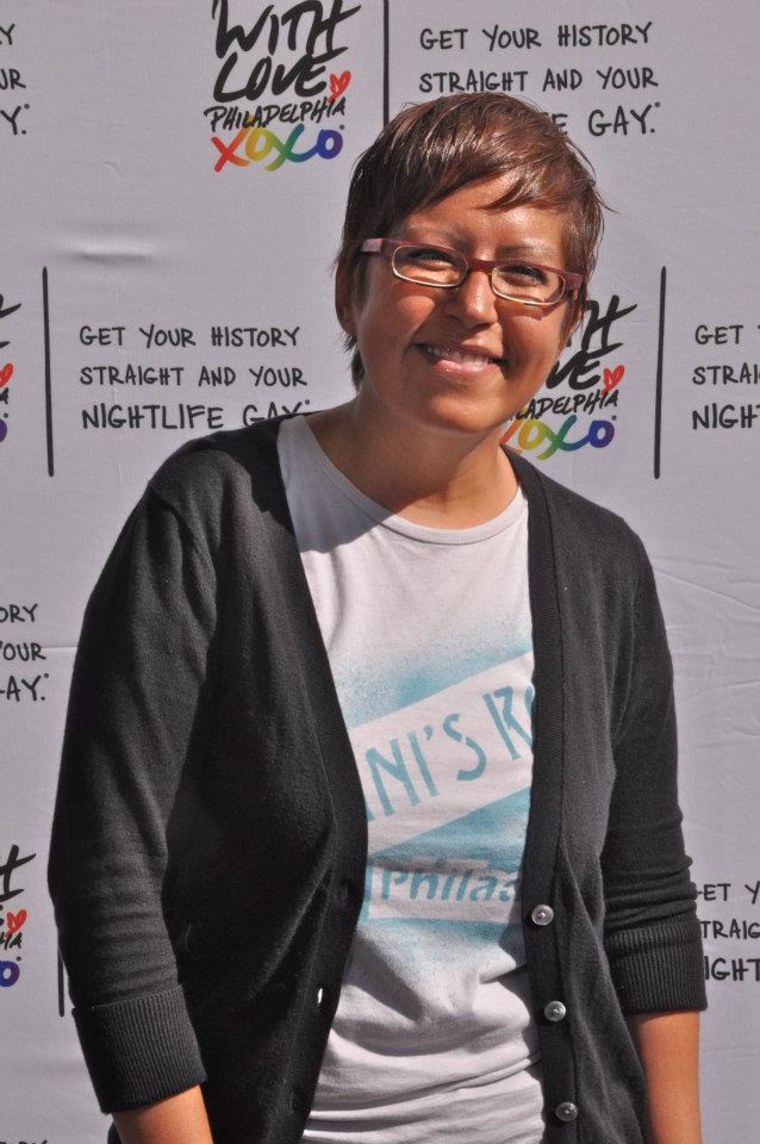
A spokesperson for Midwood Investment and Development told TODAY in a statement that the company is "truly sorry for the pain we’ve caused Gloria’s family and the local LGBTQ community."
"Because this site holds deep significance for the LGBTQ community and city, we began discussions months ago with Mural Arts Philadelphia about creating a meaningful piece of art in honor of Gloria as part of our project. We also agreed to make a $655,000 donation to Mural Arts for that artwork. Finally, we offered ground floor space in the Camac Bath Building to the LGBTQ community free of charge," the spokesperson said.
"We have worked actively in Philadelphia for more than two decades and look forward to fulfilling our agreement with Mural Arts Philadelphia to honor the memory and legacy of Gloria Casarez and Henry Minton."
Her widow, Tricia Dressel, described her heartbreak in a statement to TODAY about how "the white paint was so fresh that I could smell it as I looked up to try to find the outline of Gloria and my interlocked hands with our wedding bands."
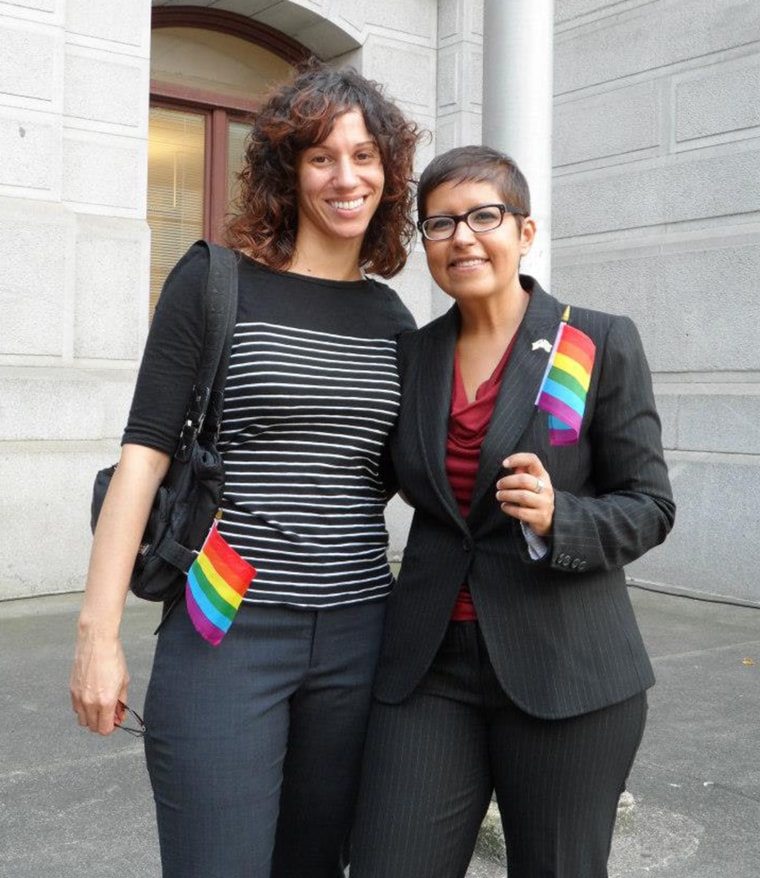
"This white paint now covers the images of Gloria’s family — who generations ago helped lay the stone for the Ben Franklin Bridge and the ground for Philadelphia’s first Spanish church — La Milagrosa. This white paint now covers the images of our community members who are living out Gloria’s legacy every day," she said.
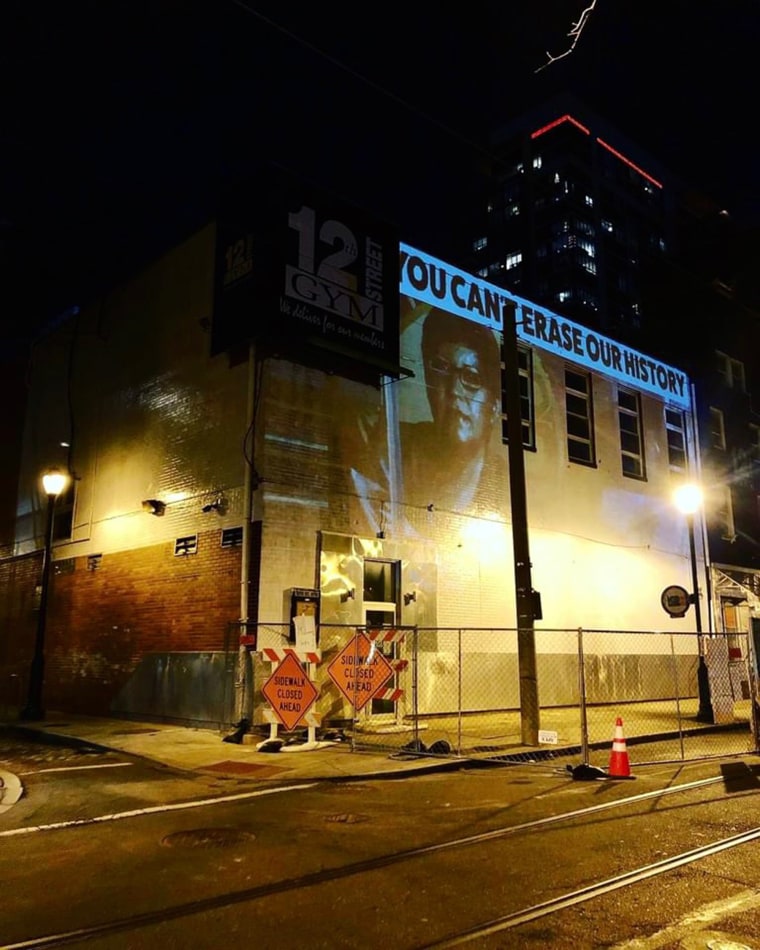
On Wednesday, hours after her work was erased, Ortiz knew she had to do something.
She went to the location on South 12th Street in the Gayborhood and projected an image of Casarez onto a wall, along with the message, "You can't erase our history."